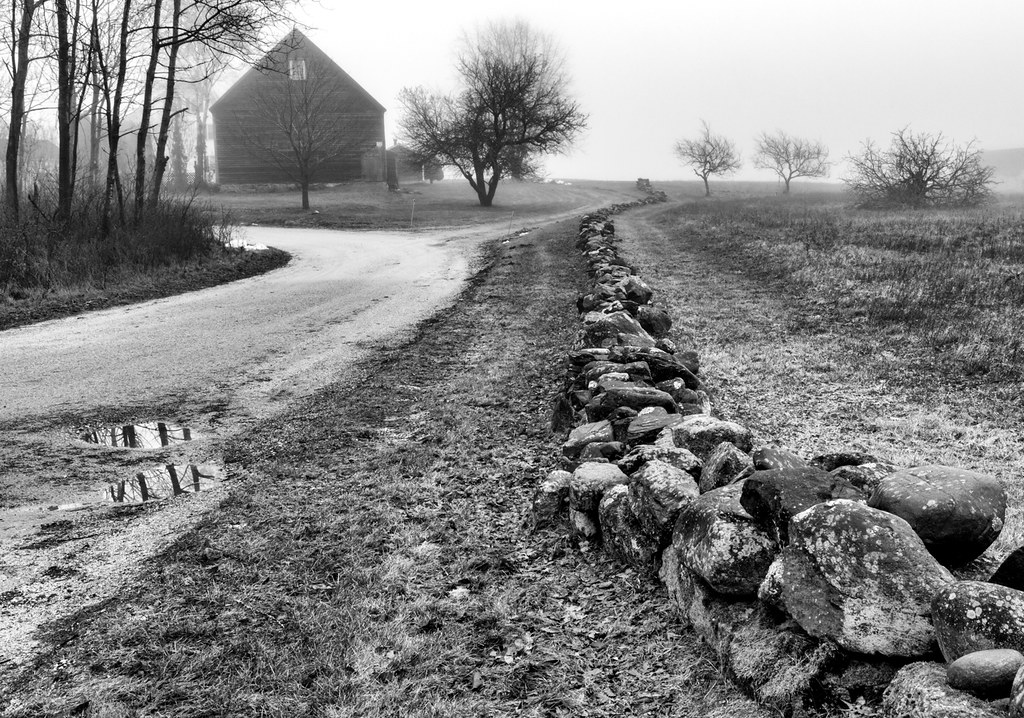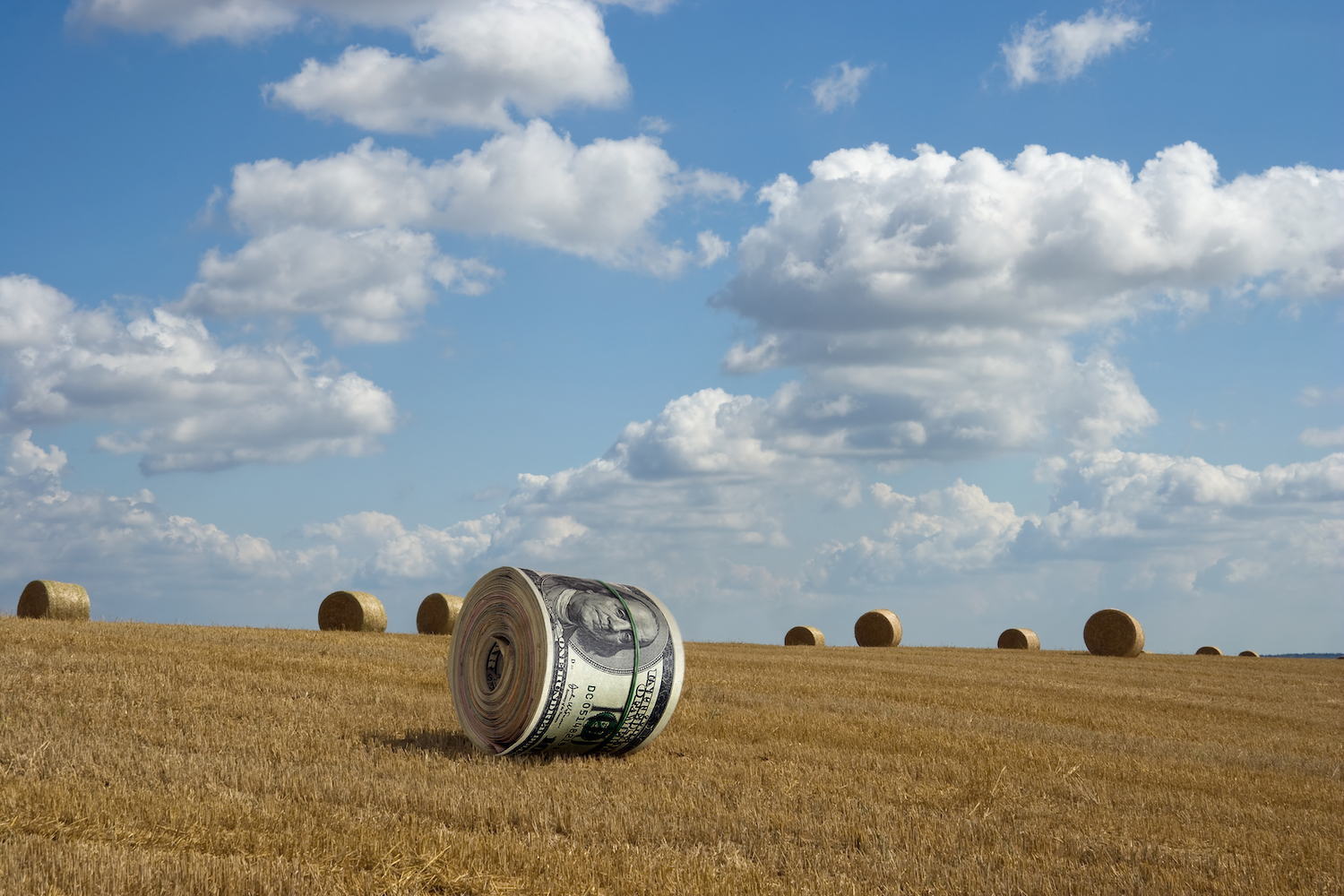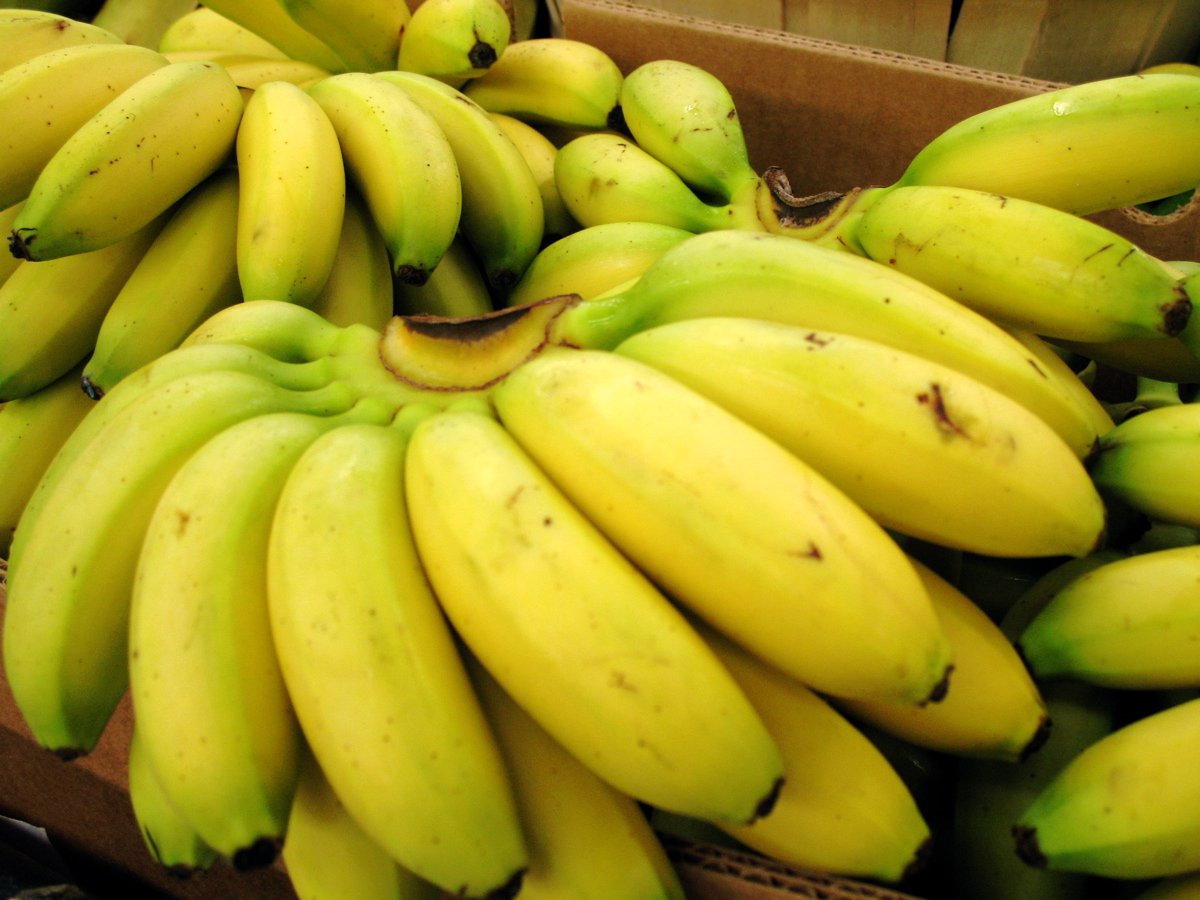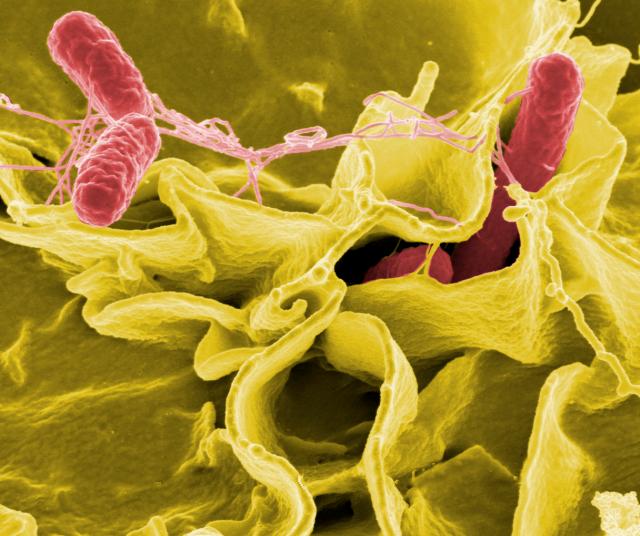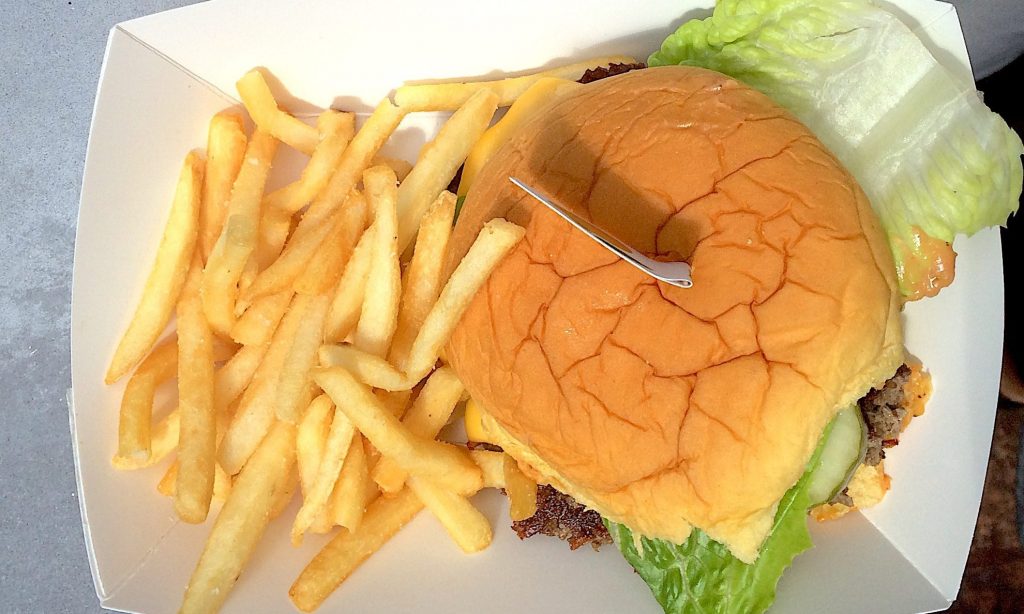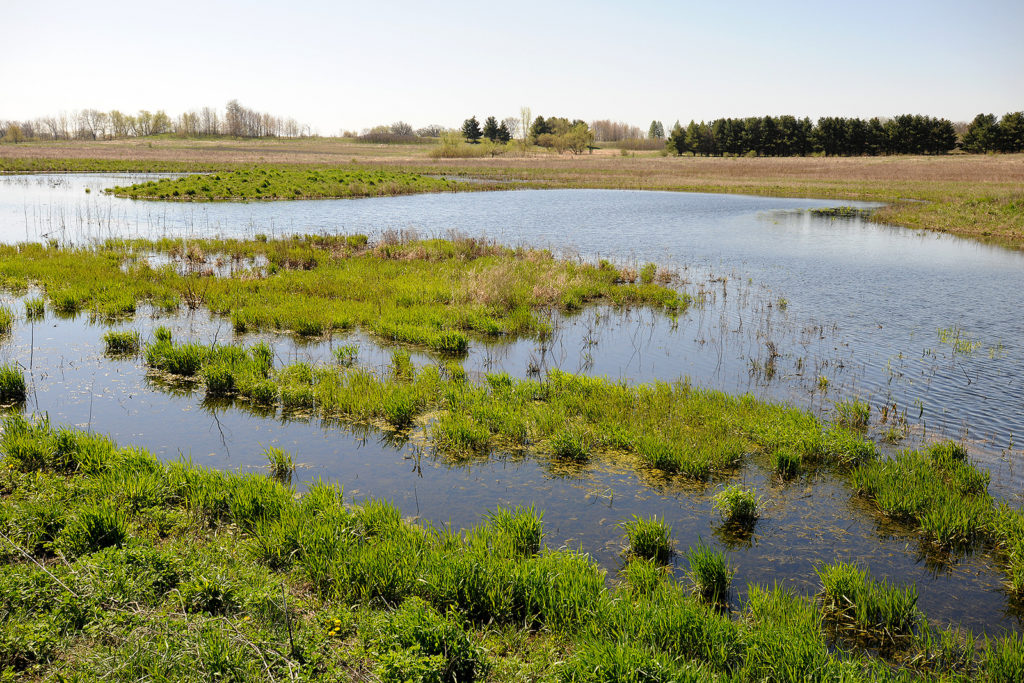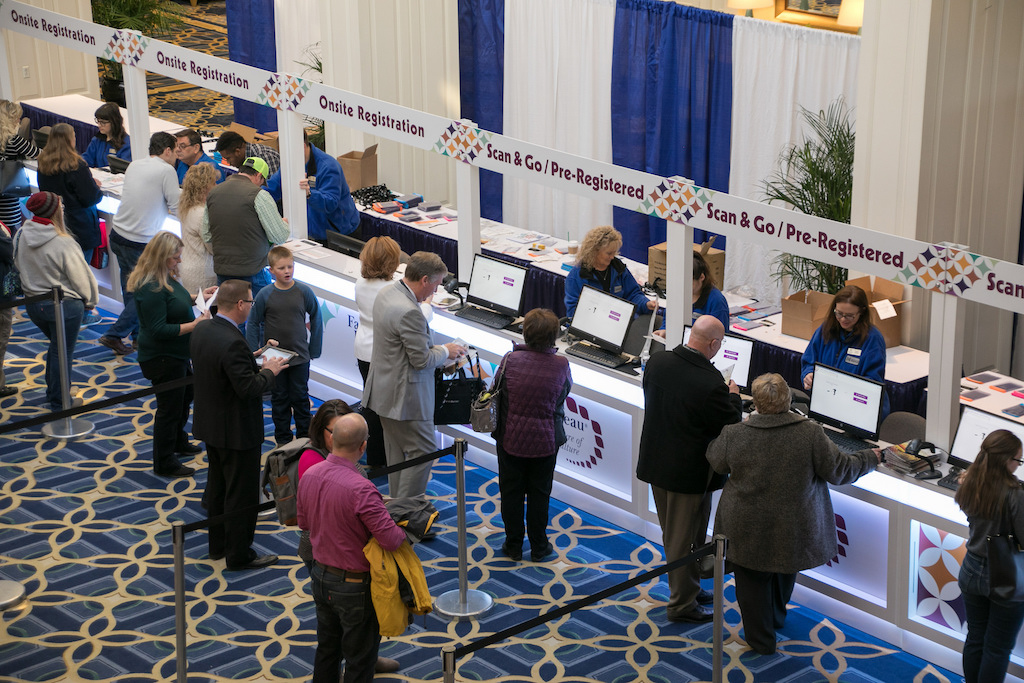Imagine for a moment, a possible future, some years ahead: Across the plains, acres that were once plowed up and planted to corn or wheat go back to native grass. Marginal, flood-prone land is left to return to wetlands, improving water quality downstream. Farmers diversify their operations in order to effectively manage risk in a changing climate. Monocropping is a thing of the past.
Or this scenario, not so long from now: Growers adopt practices like no-till and cover cropping, which helps lower their inputs—the money spent on fertilizer, pesticides, seed, and anything else they need to get a crop in the ground. They turn a profit with ease. They may even switch to cheaper, non-GMO seeds and see profit margins swell.
In this future tableau, cattle are turned out to pasture on land that was once intensively farmed. Land managers plant low-cost grasses and other silage, and graze livestock on a portion of the land while the remaining acres are allowed to rest and regenerate. There’s always something growing in the soil, anchoring nitrogen, helping retain rainwater, and sequestering carbon.
More than 300 million acres of cropland in the United States are covered by crop insurance. It’s absolutely essential to the success of American farmers and ranchers, at least according to the industry group, National Crop Insurance Services. It protects farmers from yield or revenue losses caused by natural disasters like drought, flooding, pests, or disease—even market volatility. Although administered by private insurance companies, this “essential” safety net is heavily subsidized. The federal government—the taxpayer, ultimately—chips in more than 60 percent of the premium, with farmers paying, on average, less than 40 percent of the cost of coverage.
That financial shield is a major factor for farmers in deciding what to plant where, and how much to spend on fertilizer and pesticides, because it essentially guarantees a minimum income on that land. But there have also been some mostly unintended consequences. This includes confusing guidelines that have, over time, discouraged farmers from planting cover crops like rye or clover, which anchor soil and nutrients during the off-season, and help stabilize yields through years both dry and wet. Practices, in other words, that could protect farmers from the very losses they end up needing crop insurance to recoup.
This conundrum has prompted calls for reform. Earlier this summer, I wrote about a time-consuming and costly effort to create crop insurance products that would reward farmers for adopting regenerative agriculture practices that are restorative, maintain natural systems, and rebuild the topsoil, thereby defending land against the inevitable ravages of a warming climate.
Not long after my piece was published, someone popped into my Twitter mentions to make a case for what would be the most revolutionary reform of all: Toss out the federally subsidized crop insurance program altogether.
***
I followed up with some of the farmers who reached out to ask why they’d want to get rid of crop insurance and what a world without it might look like. One of them happens to know the program inside and out. Scott Dudek grows open-pollinated seed corn on 120 acres in Michigan, less than 15 minutes from the Canadian border; he also works as a crop insurance adjuster.
“I would like to see the subsidy part of it phased out,” Dudek says. “Let it become a private product completely.”
In his view, farmers are entirely too reliant on crop insurance.
“We’ll end up not being able to feed ourselves or be a productive society because we’ve become reliant upon subsidies,” he says.
While part of Dudek’s objection to subsidized crop insurance is rooted in his libertarian politics and preference for small government, he also says that getting rid of the subsidy completely would force farmers to adopt more conservation practices. As it is now, farmers don’t need to ensure that their soil is rich enough to sustain a crop even in dry years because they can just get an insurance payout if their yields are sub-par. Although there are a number of incentive programs to nudge farmers to start growing cover crops, at both state and federal levels, they haven’t spurred widespread adoption.
“We’re going to have to become better stewards of the land going forward if we’re to remain profitable,” Dudek says.
Two Iowa farmers display their cover cropping practices, which are not encouraged by crop insurance
It’s not just farmers who take issue with crop insurance. The non-profit, non-partisan Environmental Working Group (EWG) published a report in 2017, arguing that crop insurance policy as it exists now could lead us into another Dust Bowl. The report singles out a particularly egregious provision, the Actual Production History Yield Exclusion, which was slipped into the 2014 farm bill and is exacerbating the inherent problems with crop insurance.
Here’s how crop insurance coverage is normally determined: Adjusters calculate the average yield of a crop in a specific area over many years, which gives a reasonable estimate of what those acres might yield in the future. But the yield exclusion changes that equation, allowing farmers in some counties to exclude bad years from that estimate. And not just one or two bad years, but up to 12. This essentially means farmers can rewrite history, and pretend that the region isn’t as arid or bad for crops as it really is.
“Even if bad years occur more often than good years, the bad years are treated as aberrations and the good years as normal,” the authors of the report write. “Crop insurance becomes a form of annual income support that encourages farmers to keep planting crops that fail more often than they succeed.”
Anne Weir Schechinger, a senior analyst at EWG and co-author of the 2017 report, says the problems with crop insurance aren’t limited to the yield exclusion.
“When you’re subsidizing crop insurance, you have farmers planting riskier crops or bringing riskier acres into production,” Schechinger says. Studies show that crop insurance encourages more farmers to plant corn, because it is subsidized at a higher rate than other commodity crops, like soybeans. That may seem pretty innocuous, says Schechinger, until you consider that corn is often planted in lieu of winter wheat, which holds the soil in place during the colder months. So without winter wheat in the ground (or a cover crop like buckwheat or clover, which are still rare) there is going to be more erosion, and more nutrient runoff.
Schechinger says that marginal land, or land prone to drought or flooding, is more likely to be brought into production because of subsidized crop insurance. Although they might be riskier acres (read: more likely to fail) with drastically different yields from one year to the next, farmers don’t pay the full premiums that account for that risk, so it’s still worth it to them to plant and take a chance. This has environmental consequences: Because the land is prone to drought or flooding, it’s also prone to soil erosion and nutrient runoff, which degrade local water quality and can have serious consequences downstream, causing toxic algal blooms in all types of water bodies and hypoxic dead zones in the ocean.
“There was a period where you could, as long as you planted corn, you were guaranteed a profit,” says Loran Steinlage, who farms 750 acres in Iowa. Although it used to be almost all corn, Steinlage now grows corn, soybeans, buckwheat, rye, barley, and sunflowers, “a little bit of everything.”
Steinlage says as soon as people figured out that planting corn virtually guaranteed a profit, they started buying more land, raising rents and forcing out smaller operators.
Sandra Kay Miller has also seen problems in Pennsylvania, where she raises meat goats, lambs, and poultry on a 75-acre farm.
At its core, crop insurance was intended to help farmers deal with the unpredictability of their livelihood
“I have watched, for the last 20 years, so many abuses of the crop insurance program,” Miller says. “I’m so frustrated that this is what agriculture has come to.”
Miller says she has seen wetlands that have never been farmed before plowed up and planted. And year after year, the acres flood, and year after year, the crop insurance adjuster shows up.
***
In theory, producers should not be allowed to farm converted wetlands at all, or even highly erodible land, without a conservation system in place. But Seth Watkins says that enforcement of those rules is nearly nonexistent. (It is left up to states to monitor and hold farmers accountable, and they have limited resources to do so.) Watkins is a fourth-generation farmer from southwest Iowa. He runs a diversified operation on 3,000 acres, grazes around 600 cows, and grows a mix of alfalfa, hay, oats, and corn for silage.
“What breaks my heart is that, without some significant policy change, someone would buy it all up and turn it all into crops,” Watkins says. This possibility bothered him so much that he recently put his land into a conservation trust to ensure that will never happen.
Watkins doesn’t actually want to get rid of crop insurance, or at least, he doesn’t want to deprive farmers of a safety net.
“Our food system is pretty complex,” Watkins says. “I think the idea of revenue protection is great, as long as it’s supporting appropriate land use. What bothers me with federal crop insurance is it’s created an incentive to farm land that shouldn’t be farmed.”
In a hefty 2016 report, the Heritage Foundation called the crop insurance program a “complete failure” and argued that it should have been eliminated decades ago.
“Federal coddling of the agriculture industry is deep and comprehensive,” Chris Edwards, director of tax policy studies at Cato, wrote in 2018. “Farm subsidies are costly to taxpayers, but they also harm the economy and the environment.”
Critics of crop insurance argue that farmers are not incentivized to implement regenerative agriculture practices
Some of the problems that these conservative think tanks identify are issues that might just as likely be championed by progressive organizations. For example: Farm subsidies, including crop insurance, further concentrate wealth among the already-wealthy. Edwards notes that, in 2016, the average income of farm households was 42 percent higher than the average American household. And the benefits may not actually be going to the growers; the authors of the Heritage report wryly observe that “reviews of agricultural programs have repeatedly found tens of millions of dollars in agricultural subsidies annually going to residents of such agriculture powerhouses as New York City and Washington, D.C.”
Then there’s the fact that the majority of crop insurance benefits go to producers of cash crops, like soybeans, rather than fruit and vegetable growers, or the people who epitomize our very idea of “farmer.”
Eliminating crop insurance would force every grower to be more creative, and more careful. Suddenly, they would have to manage all of the risks of farming themselves. Conservative economists like Edwards argue that farmers are more than up to it. Business risk is not unique to farming, and other business owners and operators figure out ways to manage it, he says. They save during good years, and borrow during bad.
If the government-subsidized program disappeared, private insurance companies would create a range of crop insurance products that farmers could choose from. Edwards adds that farmers could diversify their planting to protect themselves from volatile markets or fluctuating yields, something many of the farmers I spoke with for this story have already done. More farmers might pursue secondary or part-time work to supplement their farming income (again many, like Dudek, already do).
Dudek says that some larger operations would be forced to downsize, which could make those acres available to a greater number of farmers. The Heritage Foundation also says that crop insurance artificially inflates the value of land, which can make it harder than it already is for new, beginner farmers to enter the profession.
***
It’s not just farmers who would be impacted, of course. Subsidies like crop insurance have artificially depressed prices for corn, soybeans, and other grains that concentrated animal feeding operations (CAFOs) rely on to produce inexpensive meat at scale. The Union of Concerned Scientists reports that CAFOs have at times indirectly benefited from grain subsidies to the tune of $4 billion a year. Without crop insurance, fewer producers would grow those crops. That means prices would go up, putting financial pressure on existing CAFOs.
Some of the acres unsuitable for crops might be turned into rangeland for cattle. Farmers could grow low-cost grasses and other silage for grazing, and with feed costs rising for CAFOs, would be in a newly competitive position.
Crop insurance has not always been as it is now. The current system replaced a disaster relief program that had become too expensive. And yet, the crop insurance program has been far more costly to taxpayers; the Heritage Foundation calculates that it has been six times more expensive.
Getting rid of crop insurance would not necessarily mean getting rid of the farming safety net entirely. Reverting back to an ad-hoc disaster relief program that distributes funds after truly catastrophic natural disasters could protect farmers from unforeseeable circumstances while also removing the incentives that encourage them to plant on risky, environmentally-fragile acres.
All that said, there are powerful, vested interests in keeping crop insurance around. Crop insurance providers, for one. (They’re represented by the trade group that says crop insurance is essential for farmers.) The government subsidizes the cost of administering crop insurance for private insurance companies, and guarantees a much higher rate of return than they could expect in an open market. The result is that, between 2005 and 2009, private insurance companies received $1.44 in government subsidies for every dollar that went to farmers. And the industry doesn’t hesitate to lobby and spend lavishly so that politicians know that crop insurance is essential.
For at least that reason, crop insurance probably isn’t going anywhere anytime soon. But plenty of people agree that the current system is unsustainable, both financially, and environmentally. And there is an alternative.
“Let’s look 10 or 20 years down the road and say, can you imagine what our communities would be like if we really embraced ecologically sound, carbon-smart farming practices?” says Watkins. “I mean, from our water cleaning up to wild species coming back … it would rejuvenate rural Iowa.”
